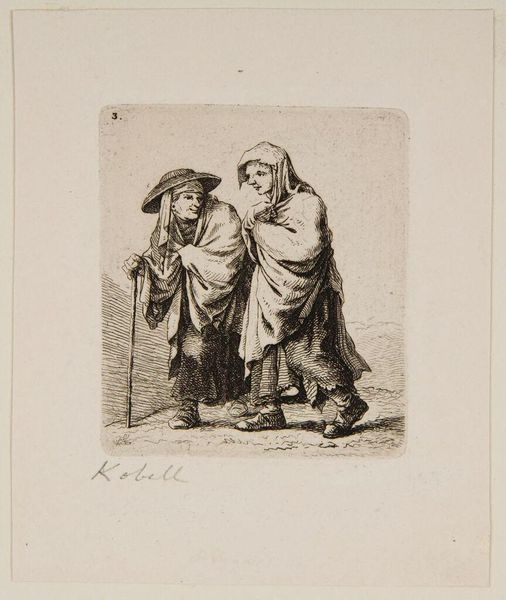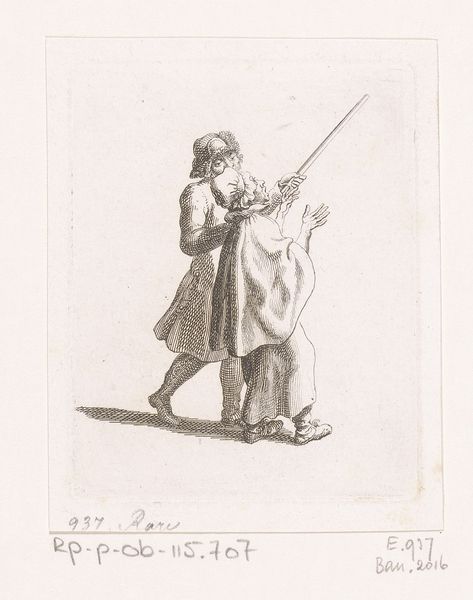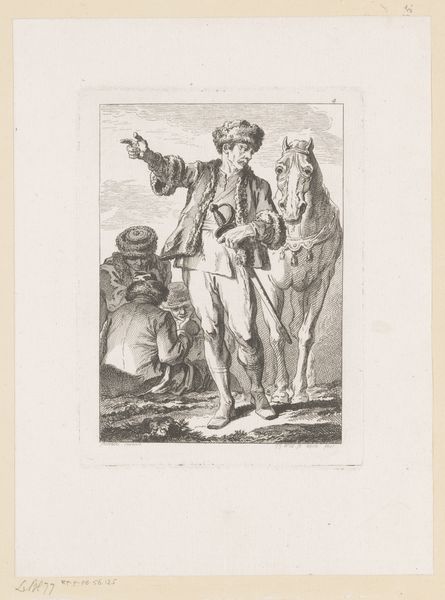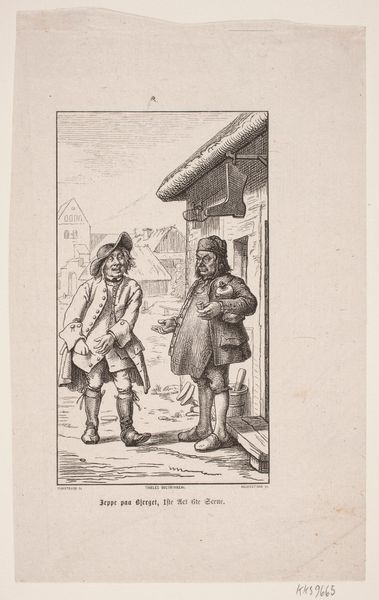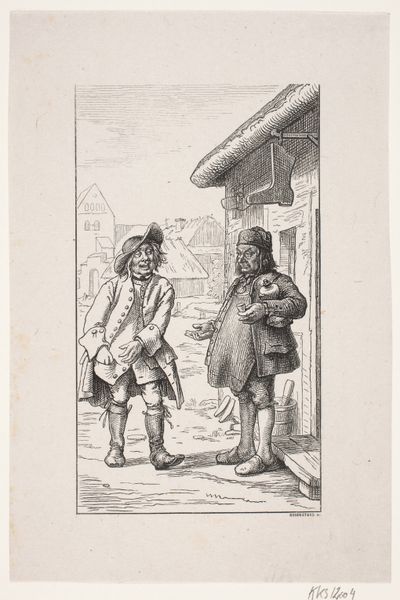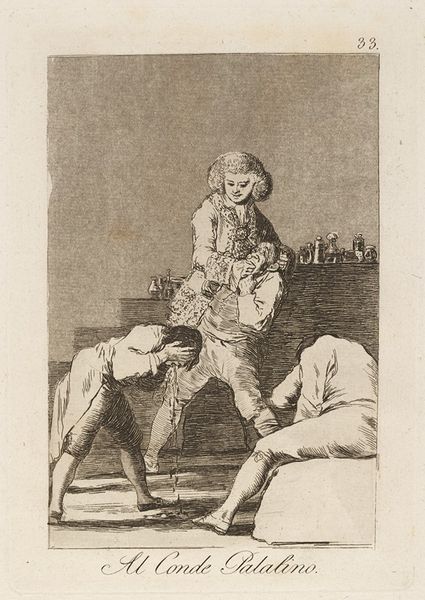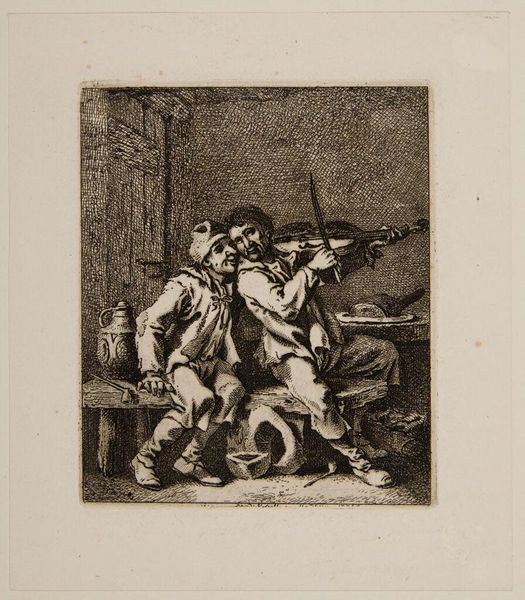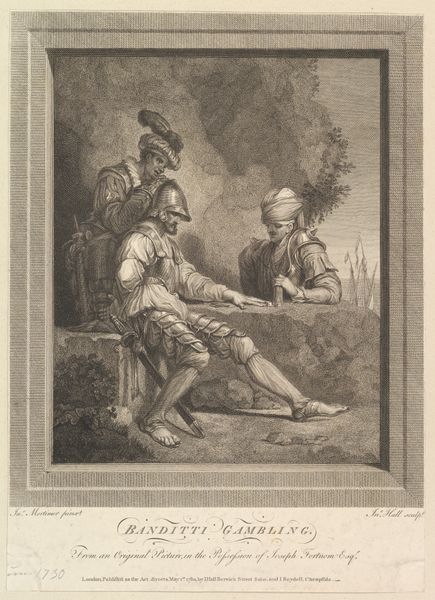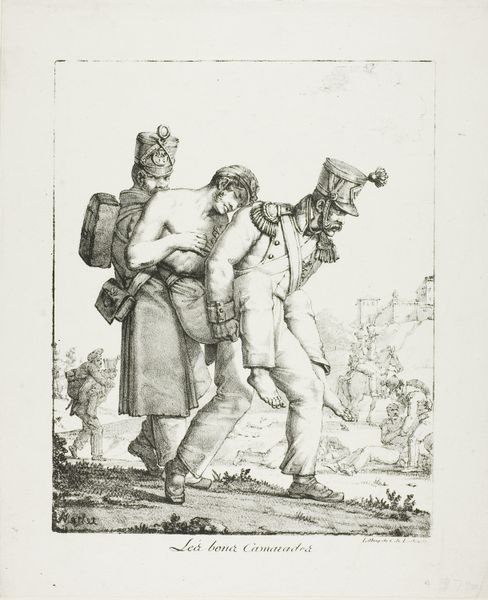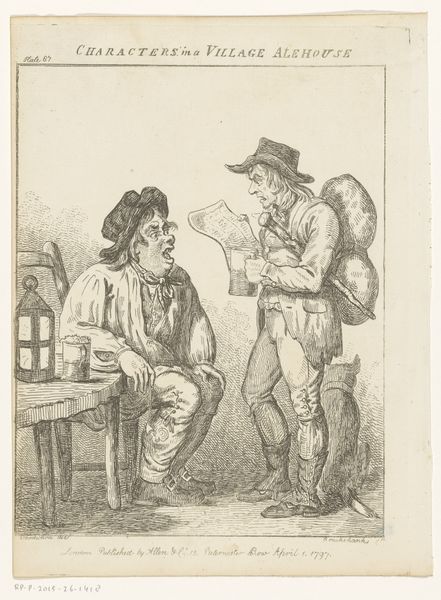
Copyright: CC0 1.0
Curator: This is Ferdinand Kobell's "Blind Beggar," currently residing at the Harvard Art Museums. There’s no specific date assigned to it, but Kobell lived from 1740 to 1799. Editor: It has such a stark, raw quality. It feels immediate, like a quick sketch capturing a moment. I'm curious about the material process. Curator: The printmaking process allows for the reproduction and distribution of such images, highlighting the social realities of the time. Beggars were a common sight, and this piece reflects that social landscape. Editor: Absolutely. And how the etching itself - the lines, the shading - are all about conveying the texture of their clothes, the roughness of their lives. The labor behind creating such an image, thinking about the working class, and those who consume it is critical. Curator: The image also raises questions about the institutional role of art. How did depictions of poverty circulate, and what impact did they have on societal attitudes? Editor: Good point! It's about the social and political role of art, questioning who is represented, and who gets to represent them. Curator: Indeed. Kobell's print serves as a reminder of the power of imagery to shape perceptions and reinforce social hierarchies. Editor: It leaves me thinking about the unseen labor involved in the art's creation.
Comments
No comments
Be the first to comment and join the conversation on the ultimate creative platform.
